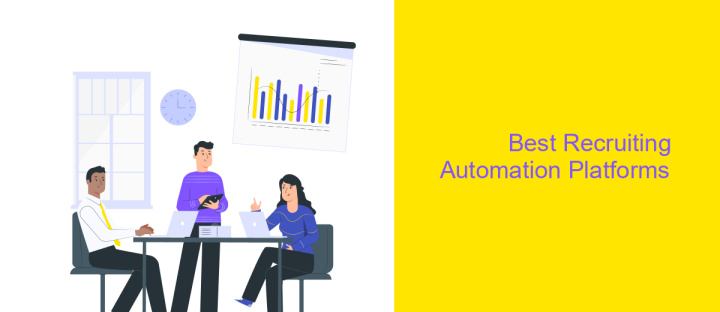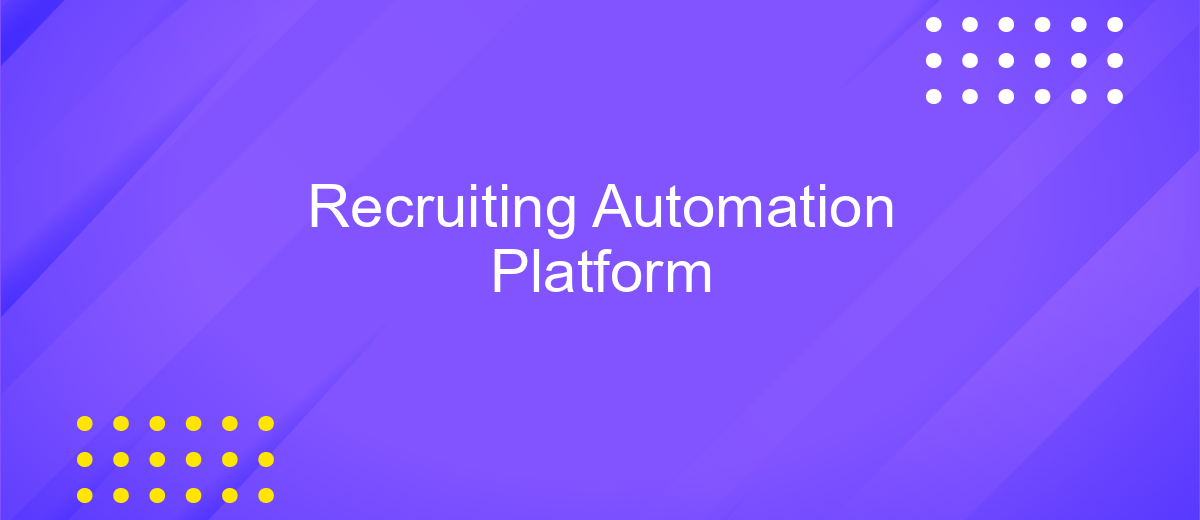Recruiting Automation Platform
In today's fast-paced business environment, recruiting automation platforms have become essential tools for streamlining the hiring process. By leveraging advanced technologies like AI and machine learning, these platforms enhance efficiency, reduce time-to-hire, and improve candidate matching. As companies compete to attract top talent, adopting a recruiting automation platform can provide a significant competitive edge, allowing HR teams to focus on strategic decision-making and fostering a more agile workforce.
What is Recruiting Automation Platform?
A Recruiting Automation Platform (RAP) is a technology solution designed to streamline and enhance the recruitment process by automating repetitive tasks and improving efficiency. These platforms integrate various tools and features that assist recruiters in managing the entire hiring process, from sourcing candidates to onboarding new hires. By leveraging advanced algorithms and data analytics, RAPs can significantly reduce the time and effort required to find and hire the right talent.
- Automated resume screening and candidate matching
- Streamlined communication through chatbots and automated emails
- Data-driven insights for better decision-making
- Integration with job boards and social media platforms
- Customizable workflows and reporting features
Implementing a Recruiting Automation Platform can lead to a more efficient recruitment process, enabling organizations to focus on strategic tasks rather than manual, time-consuming activities. By automating routine tasks, recruiters can dedicate more time to engaging with candidates and building relationships, which ultimately leads to better hiring outcomes. Additionally, RAPs help reduce human error and bias, ensuring a fair and objective hiring process that aligns with the organization's goals and values.
Benefits of Recruiting Automation

Recruiting automation platforms significantly enhance the efficiency of the hiring process by streamlining repetitive tasks. By automating activities such as resume screening, interview scheduling, and candidate follow-ups, recruiters can focus more on strategic decision-making and candidate engagement. This not only reduces time-to-hire but also improves the quality of hires, as recruiters can dedicate more time to evaluating the most suitable candidates. Additionally, automation minimizes human error, ensuring a more consistent and unbiased recruitment process.
Moreover, integrating recruiting automation tools with other HR systems can be seamlessly achieved using services like ApiX-Drive. This integration capability allows for the synchronization of candidate data across platforms, providing a holistic view of the recruitment pipeline. ApiX-Drive simplifies the integration process, enabling recruiters to connect various applications without extensive technical knowledge. As a result, organizations can maintain a cohesive and efficient workflow, ultimately enhancing the overall recruitment strategy. By leveraging recruiting automation, companies can not only save time and resources but also foster a more agile and responsive hiring environment.
How to Choose the Right Recruiting Automation Platform

Choosing the right recruiting automation platform is crucial for streamlining your hiring process and enhancing efficiency. Start by identifying your organization's specific needs and goals. Consider factors such as the size of your company, the volume of hiring, and the types of positions you typically recruit for. Understanding these elements will help you determine which features are essential for your platform.
- Evaluate the platform's integration capabilities with your existing systems, such as HR software and applicant tracking systems.
- Assess the user-friendliness of the platform to ensure that your team can easily adopt and utilize it.
- Consider the scalability of the platform to accommodate your company's future growth and evolving needs.
- Review the platform's customer support and training resources to ensure you receive adequate assistance when needed.
- Analyze the cost-effectiveness by comparing the pricing models with the features offered.
Ultimately, the right recruiting automation platform should align with your recruitment strategy and provide a seamless experience for both your hiring team and candidates. By carefully evaluating these factors, you can make an informed decision that enhances your recruitment efforts and supports your organization's growth.
Best Recruiting Automation Platforms

In today's competitive hiring landscape, recruiting automation platforms have become essential tools for streamlining the recruitment process. These platforms leverage advanced technology to help organizations efficiently manage their talent acquisition efforts, reducing time-to-hire and improving the candidate experience.
When selecting the best recruiting automation platform, it's crucial to consider features such as integration capabilities, user-friendliness, and scalability. A platform that seamlessly integrates with existing HR systems and offers a user-friendly interface can significantly enhance the recruitment process. Additionally, scalability ensures the platform can grow alongside your organization.
- Greenhouse: Known for its robust analytics and customizable workflows.
- Breezy HR: Offers a visually appealing interface and collaborative hiring features.
- Lever: Provides excellent CRM capabilities and candidate engagement tools.
- Jobvite: Focuses on social recruiting and candidate relationship management.
- SmartRecruiters: Delivers a comprehensive suite of recruitment marketing tools.
Ultimately, the best recruiting automation platform for your organization will depend on your specific needs and goals. By carefully evaluating each option's features and capabilities, you can select a platform that not only meets your current requirements but also supports future growth and innovation in your recruitment strategy.
- Automate the work of an online store or landing
- Empower through integration
- Don't spend money on programmers and integrators
- Save time by automating routine tasks
Tips for Implementing Recruiting Automation
Implementing recruiting automation requires a strategic approach to ensure seamless integration and maximum efficiency. Start by clearly defining your recruitment objectives and identifying repetitive tasks that can be automated. This will help in selecting the right tools that align with your goals. It's crucial to involve your HR team in the decision-making process to ensure the chosen platform meets their needs and enhances their workflow. Training sessions should be conducted to familiarize the team with the new system, reducing resistance and promoting adaptability.
Integrating your recruiting automation platform with existing HR systems is essential for a smooth transition. Consider using services like ApiX-Drive, which facilitate easy integration between various applications, ensuring data consistency and reducing manual input errors. Regularly review the performance of the automated processes and gather feedback from users to make necessary adjustments. By continuously optimizing the system, you can enhance the recruitment process, improve candidate experience, and ultimately achieve better hiring outcomes. Remember, successful implementation is an ongoing process that requires attention and refinement.
FAQ
What is a Recruiting Automation Platform?
How does a Recruiting Automation Platform improve the hiring process?
Can a Recruiting Automation Platform integrate with existing HR systems?
What are the key features to look for in a Recruiting Automation Platform?
Is it possible to customize a Recruiting Automation Platform for specific recruitment needs?
Time is the most valuable resource in today's business realities. By eliminating the routine from work processes, you will get more opportunities to implement the most daring plans and ideas. Choose – you can continue to waste time, money and nerves on inefficient solutions, or you can use ApiX-Drive, automating work processes and achieving results with minimal investment of money, effort and human resources.


